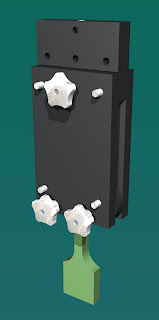Need testing advice??
I'm afraid that I've brought a bit of a bug to Tinius Olsen... Everyone seems to be developing blogs. (I think you can get a cream for it from a good pharmacist). If you want to learn about testing plastics, try this. http://www.testingplastics.com/ If you'd like to learn about testing metals, try this. http://www.testingmetal.com/ If you are a student looking for testing advice or examples try this. http://www.schooloftesting.com/ And of course testing textiles can be found here... http://www.testingtextiles.com/ Harry, Earl, David and Sylvia are all specialists in their specific areas and are happy to help... The question and answers section is very informative.


